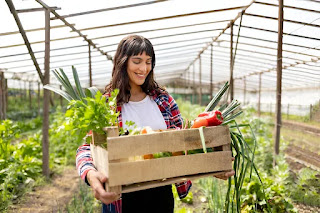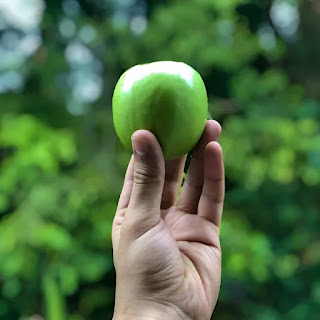Easy Seasonal Gardening Hacks To Grow More Vegetables
Introduction
Gardening is a rewarding activity, but it’s not always easy to grow more vegetables with limited space or resources. That’s where seasonal gardening hacks come in. These simple, yet effective techniques allow gardeners to maximize their vegetable yield by working with the seasons rather than against them. Whether you're new to gardening or a seasoned pro, these hacks will help you make the most of your garden and enjoy fresh, homegrown vegetables throughout the year. In this guide, we'll share the best seasonal gardening tips that ensure your plants thrive and produce more. From choosing the right planting season to using organic practices, we’ll show you how to make your garden more productive and sustainable.
Understanding the Best Seasons for Planting Vegetables
The foundation of successful vegetable gardening starts with understanding the best seasons for planting. Each season offers its own unique set of benefits, but it’s essential to choose the right vegetables that thrive in those conditions. For example, spring is ideal for fast-growing crops like lettuce, spinach, and peas, while summer is perfect for heat-loving vegetables such as tomatoes, peppers, and zucchini. Fall gardening allows you to grow cool-weather crops like kale, carrots, and broccoli.
Planning your garden by season is key to maximizing your vegetable output. To get the most from your seasonal garden, consider factors such as temperature, sunlight, and the growing needs of each vegetable. By strategically planting crops at the right time, you'll increase the chances of a bountiful harvest. Additionally, understanding your region's climate will help you optimize your planting schedule, ensuring a steady supply of fresh produce year-round.
The right timing not only ensures better growth but also prevents overcrowding and competition for resources like sunlight and water. By following the natural rhythm of the seasons, you can grow vegetables that are well-suited to each period of the year and maximize their potential.
Choosing the Right Gardening Techniques for Maximum Yield
Maximizing your vegetable yield depends not only on the right planting times but also on using the best gardening techniques. These techniques can make a huge difference in how well your vegetables grow, especially if you’re working with limited space or resources. Let’s dive into some of the most effective gardening methods that can boost your vegetable production.
Raised Beds
Raised beds offer better drainage, improved soil aeration, and easier access to plants, making them ideal for growing more vegetables in a compact space. These beds allow you to control the soil quality more effectively, especially if your garden’s native soil is rocky, clay-heavy, or nutrient-poor. Raised beds also warm up faster in the spring, extending your growing season for vegetables that thrive in warmer conditions.Container Gardening
If space is limited, container gardening is a game-changer. Using containers for your vegetables allows you to grow crops like tomatoes, peppers, and herbs in smaller spaces like balconies, patios, or even windowsills. The key to success with container gardening is choosing the right container size and ensuring your plants have adequate drainage. It’s also essential to choose compact varieties or dwarf plants that fit well in pots.Vertical Gardening
For those with very limited space, vertical gardening is an excellent option. This technique involves growing plants upwards rather than outwards by using trellises, towers, or hanging baskets. It’s perfect for climbing plants such as cucumbers, beans, and peas. Vertical gardening not only saves ground space but also provides better airflow and reduces the risk of soil-borne diseases. You can even repurpose old pallets or ladders to create vertical plant supports.
These gardening techniques help optimize your available space, maximize sunlight exposure, and make gardening more efficient. Whether you choose raised beds, containers, or vertical gardening, using the right technique can significantly increase your vegetable yield while saving space.
Utilizing Companion Planting to Boost Growth
Companion planting is a time-tested gardening technique that involves growing different plant species close together to benefit one another. This natural approach can boost your vegetable yield by encouraging healthier plants, deterring pests, and promoting more efficient use of space. By strategically pairing vegetables, you can improve growth, reduce the need for chemical pesticides, and even increase your harvest.
Pest Control
Certain plants act as natural repellents for pests. For example, planting marigolds near tomatoes can help keep aphids and nematodes at bay. Similarly, basil can protect your tomato plants from hornworms and mosquitoes. By including pest-repelling plants in your garden, you reduce the need for harmful chemicals and maintain a healthier environment for your vegetables.Improved Soil Fertility
Some plants have the ability to fix nitrogen in the soil, which is an essential nutrient for healthy vegetable growth. For instance, legumes like beans and peas can enrich the soil by providing nitrogen, benefiting neighboring plants such as tomatoes, cucumbers, and peppers. Pairing nitrogen-fixing plants with those that have high nutrient demands ensures that your soil remains fertile without additional fertilizers.Maximizing Space Efficiency
Companion planting also helps maximize garden space by pairing plants that complement each other's growth habits. For example, growing taller crops like corn alongside smaller plants like lettuce or spinach can make the best use of vertical and horizontal space. This technique allows you to fit more plants in a smaller area, increasing the variety and quantity of vegetables you can grow.
By incorporating companion planting into your seasonal gardening plan, you can naturally enhance your vegetables' growth while reducing the need for chemical interventions. The right plant partnerships will improve soil health, deter pests, and increase overall productivity, leading to a thriving garden.
Implementing Efficient Watering Techniques for Healthier Crops
Watering is one of the most critical aspects of vegetable gardening, and knowing how to do it efficiently can make a huge difference in the health of your crops and the success of your garden. Proper watering techniques ensure that plants receive the right amount of moisture, which is essential for their growth. Overwatering or underwatering can lead to diseases, poor root development, and stunted growth. Let’s explore the most effective watering methods that will keep your vegetables thriving throughout the seasons.
Drip Irrigation
Drip irrigation is a highly efficient watering method that delivers water directly to the root zone of each plant. This system uses tubes with small emitters that release water slowly, reducing evaporation and runoff. Drip irrigation ensures that your vegetables receive consistent moisture without wasting water. It's especially beneficial in areas with water restrictions or where the climate tends to be dry, as it minimizes water loss and ensures efficient usage.Soaker Hoses
Soaker hoses work similarly to drip irrigation but are typically easier to set up and more affordable. They are porous and allow water to seep out evenly along the length of the hose. When placed on the soil surface or buried under mulch, soaker hoses ensure that water is delivered evenly to plants’ roots. This method also helps conserve water, as it targets the soil directly and prevents it from evaporating too quickly.Watering in the Morning
The timing of your watering is just as important as the technique you use. Watering in the early morning hours allows the plants to absorb moisture before the heat of the day sets in. It also helps prevent fungal diseases, as the soil has time to dry before evening. If you water in the evening, moisture can linger on plant leaves overnight, promoting the growth of mildew and mold. Morning watering gives plants the best chance to dry out by nightfall, ensuring a healthy garden environment.Mulching to Retain Moisture
One of the simplest ways to improve your watering efficiency is by using mulch. Mulch helps retain moisture in the soil, reducing the frequency of watering and preventing weeds from competing for water. Organic mulches, such as straw or shredded leaves, break down over time and improve soil health, adding nutrients and encouraging beneficial organisms. By keeping the soil cool and moist, mulch supports healthy root systems and prevents stress on your plants.
By incorporating these watering techniques into your seasonal gardening routine, you'll ensure that your vegetables receive the optimal amount of water. Proper watering not only conserves resources but also promotes stronger, healthier plants, leading to higher yields and better-quality crops.
Extending the Growing Season with Cold Frames and Row Covers
One of the key strategies for year-round gardening is extending the growing season, especially during colder months. Cold frames and row covers are excellent tools that can help you protect your vegetables from frost and extreme weather while allowing them to continue growing longer into the season. These simple yet effective structures create a microclimate that shields plants from cold temperatures, ensuring that you get the most out of your garden.
Using Cold Frames for Early and Late Crops
Cold frames are low, transparent structures that trap sunlight and heat, creating a warmer environment for plants inside. They work like mini-greenhouses, providing protection from the elements, especially during chilly mornings and evenings. Cold frames are ideal for growing cold-hardy vegetables like spinach, kale, and lettuce early in the spring or late into the fall. These structures can be built easily with old windows or clear plastic, making them an affordable option for extending the growing season.Row Covers to Protect Against Frost
Row covers are lightweight fabrics that are placed over crops to provide protection from frost, wind, and pests. They work by trapping heat and moisture, maintaining a stable environment for your vegetables. Row covers are particularly useful for protecting tender plants like tomatoes, peppers, and beans when nighttime temperatures dip. They can be removed when the weather warms up, allowing your plants to continue growing. These covers also allow light and water to pass through, so your vegetables still receive the nutrients they need.Creating a Microclimate for Temperature Regulation
Both cold frames and row covers work by creating a microclimate—an environment where temperature, humidity, and light levels are regulated. This is particularly important for plants that need protection from the harsh winds and freezing temperatures that come with the fall and winter months. By using these structures, you can protect your vegetables from frost while allowing them to grow at their own pace. Additionally, these tools help regulate moisture levels in the soil, preventing the plants from drying out during the winter.Maximizing Vegetable Harvest in Shorter Growing Seasons
Using cold frames and row covers can help you maximize your harvest by allowing you to grow vegetables for a longer period before frost sets in. Early spring planting is made easier, and late-season crops can be harvested well into the winter months. Cold frames and row covers help reduce the risk of crops being damaged by unexpected frost, enabling you to enjoy fresh, home-grown vegetables even when the weather turns colder.
By incorporating cold frames and row covers into your garden, you can extend the growing season, ensure your vegetables stay protected from the cold, and maximize the harvest potential. These simple tools will make a big difference in the success of your seasonal vegetable gardening.
Conclusion: Seasonal Gardening Hacks for Year-Round Success
In conclusion, growing vegetables all year long is achievable with a little ingenuity and the right strategies. By embracing seasonal gardening hacks, such as extending the growing season with cold frames and row covers, you can ensure that your garden remains productive, even during the colder months. Choosing the right vegetables for each season, creating a suitable environment for growth, and using simple tools to protect your crops will not only help you grow more but also enhance the health and quality of your harvest.
By implementing these easy gardening techniques, beginners can create a thriving vegetable garden throughout the year, making the most of every season. With a little planning, you can enjoy fresh, home-grown vegetables no matter the weather outside. Keep experimenting, learn from each season, and let your gardening journey grow stronger every year!



Comments
Post a Comment
Have a Question ?